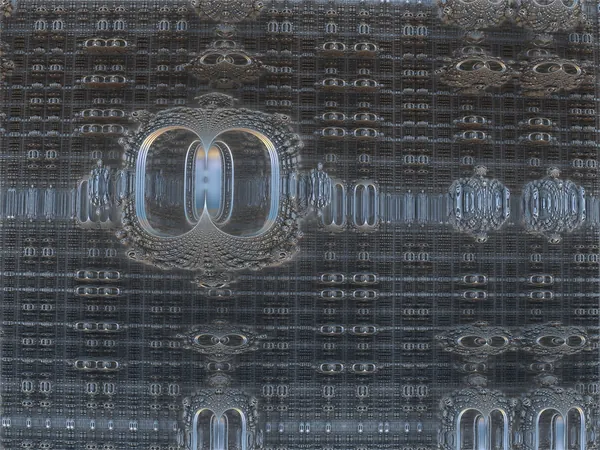
Unlocking the Future of Quantum Computing with 'Neglectons'
2025-08-05
Author: Yu
Quantum Computing: The Next Frontier
Quantum computers are set to revolutionize how we solve problems, achieving feats far beyond today’s most powerful supercomputers. However, current models face significant hurdles due to the fragile nature of quantum bits, or ‘qubits,’ which are highly susceptible to interference from their surroundings.
The Promise of Topological Quantum Computing
One of the most exciting solutions on the horizon is topological quantum computing. This innovative approach encodes information in the geometric properties of exotic particles called anyons. Predicted to exist in certain two-dimensional materials, these anyons could offer incredible resilience against errors compared to traditional qubits.
"Among the frontrunners for developing such computing systems are Ising anyons, currently being studied intensively for their potential applications in exotic materials like the fractional quantum Hall state and topological superconductors," stated Aaron Lauda, a professor at USC Dornsife College of Letters, Arts and Sciences.
The Limitations of Ising Anyons
Despite their potential, Ising anyons can’t perform all operations needed for universal quantum computing on their own. Their computations rely on a method known as ‘braiding,’ where anyons are physically manipulated around one another. However, this method is limited to specific operations called Clifford gates, which do not encompass the complete range required for universal quantum computations.
A Breakthrough Discovery: Neglectons
In groundbreaking research published in Nature Communications, a team led by USC researchers found a surprising workaround. By integrating a previously overlooked type of anyon, termed ‘neglectons,’ Ising anyons can now become universal, performing any quantum computation through braiding alone.
These neglectons, aptly named for their previously dismissed status, provide the crucial missing link needed to enhance the computational capabilities of Ising anyons.
From Scrap to Discovery: The Mathematical Revolution
The key to this breakthrough lies within a new category of mathematical theories called non-semisimple topological quantum field theories (TQFTs). Unlike traditional models that discard certain objects as 'quantum trace zero'—deeming them useless—this new framework salvages these components, revealing the existence of the neglecton.
"What was considered mathematical garbage has now become quantum treasure," Lauda explained. "In essence, we've found a way to use these neglected elements to facilitate universal computation simply by braiding the Ising anyons around a stationary neglecton."
Navigating Mathematical Challenges
The discovery did not come without hurdles. The non-semisimple framework introduces complexities that challenge the fundamental tenets of quantum mechanics. Traditionally, such irregularities would be seen as major flaws. However, Lauda's team innovatively designed their quantum structure to minimize these issues.
"Imagine building a quantum computer in a house with unstable rooms. Instead of addressing all the structural problems, we made sure to conduct all computations in stable areas, keeping the troublesome sections off-limits," Lauda elaborated.
A New Era for Quantum Information Science
This breakthrough highlights the profound link between abstract mathematics and practical engineering challenges. By embracing concepts once considered superfluous, the research opens a new chapter in quantum information science.
Lauda expressed enthusiasm for the future: "We are approaching universal quantum computing using particles we already know how to create. The math provides a clear direction for experimentalists: if they can realize this extra stationary anyon, the potential of Ising-based systems could be fully unlocked."
What Lies Ahead?
Looking forward, the team plans to expand their mathematical framework and explore new applications. They aim to identify potential material platforms where neglectons could exist and develop methodologies to translate their theoretical findings into feasible quantum operations.
The realization of this research could propel us closer than ever to practical and universal quantum computing.


 Brasil (PT)
Brasil (PT)
 Canada (EN)
Canada (EN)
 Chile (ES)
Chile (ES)
 Česko (CS)
Česko (CS)
 대한민국 (KO)
대한민국 (KO)
 España (ES)
España (ES)
 France (FR)
France (FR)
 Hong Kong (EN)
Hong Kong (EN)
 Italia (IT)
Italia (IT)
 日本 (JA)
日本 (JA)
 Magyarország (HU)
Magyarország (HU)
 Norge (NO)
Norge (NO)
 Polska (PL)
Polska (PL)
 Schweiz (DE)
Schweiz (DE)
 Singapore (EN)
Singapore (EN)
 Sverige (SV)
Sverige (SV)
 Suomi (FI)
Suomi (FI)
 Türkiye (TR)
Türkiye (TR)
 الإمارات العربية المتحدة (AR)
الإمارات العربية المتحدة (AR)